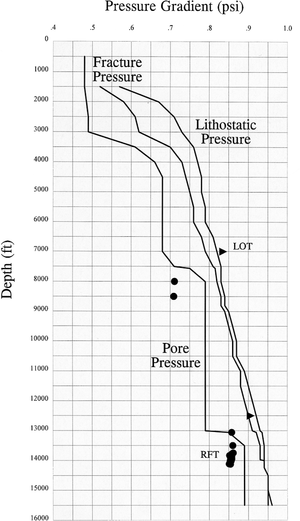Difference between revisions of "Natural hydraulic fracturing example, North Sea"
Jump to navigation
Jump to search
(Initial import) |
Cwhitehurst (talk | contribs) m (added Category:Treatise Handbook 3 using HotCat) |
||
| (13 intermediate revisions by 3 users not shown) | |||
| Line 6: | Line 6: | ||
| part = Predicting the occurrence of oil and gas traps | | part = Predicting the occurrence of oil and gas traps | ||
| chapter = Evaluating top and fault seal | | chapter = Evaluating top and fault seal | ||
| − | | frompg = 10- | + | | frompg = 10-61 |
| − | | topg = 10- | + | | topg = 10-61 |
| author = Grant M. Skerlec | | author = Grant M. Skerlec | ||
| link = http://archives.datapages.com/data/specpubs/beaumont/ch10/ch10.htm | | link = http://archives.datapages.com/data/specpubs/beaumont/ch10/ch10.htm | ||
| Line 16: | Line 16: | ||
==Trap description== | ==Trap description== | ||
| − | A trap in the Central | + | A [[trap]] in the [[Central graben]], [[North Sea]], appears to have been bled dry by [[Natural hydraulic fracturing of top seals|natural hydraulic fracturing]]. This trap is a low-relief [[salt structure]] with a [[dry hole]] and has less-than-sufficient [[strain]] to [[fracture]] the top [[seal]]. |
==Evidence== | ==Evidence== | ||
| + | |||
| + | [[file:evaluating-top-and-fault-seal_fig10-44.png|300px|thumb|{{figure number|1}}Pore pressure is close to the fracture pressure at the base of the top seal. Copyright: Esso Exploration and Production, U.K.]] | ||
| + | |||
Evidence for hydraulic fracturing and seal rupture include the following: | Evidence for hydraulic fracturing and seal rupture include the following: | ||
| − | * A fossil oil—water contact exists at the synclinal spill point of the trap. The trap was once filled with hydrocarbon, but something happened after trap fill to bleed off hydrocarbons. | + | * A fossil [[oil—water contact]] exists at the [[Syncline|synclinal]] [[spill point]] of the trap. The trap was once filled with [[hydrocarbon]], but something happened after trap fill to bleed off hydrocarbons. |
| − | * Hydrocarbon shows exist throughout the sediment column above the reservoir. These hydrocarbons are direct evidence of a breached top seal. | + | * Hydrocarbon [[Show evaluation|shows]] exist throughout the sediment column above the [[reservoir]]. These hydrocarbons are direct evidence of a breached top seal. |
| − | * The pore pressure is close to the theoretical fracture pressure. In adjacent fields, the pore pressure is significantly less than P<sub>f</sub>. | + | * The [http://www.glossary.oilfield.slb.com/en/Terms/p/pore_pressure.aspx pore pressure] is close to the theoretical [[fracture pressure]], P<sub>f</sub>. In adjacent fields, the pore pressure is significantly less than P<sub>f</sub>. |
| − | * Cores show vertical, open extension | + | * Cores show vertical, open [[extension fracture]]s rather than the more common [[shear fracture]]s found in adjacent fields. These fractures are identical to fractures produced by hydraulic fracturing. |
| − | |||
| − | |||
| − | [[file:evaluating-top-and-fault-seal_fig10-44.png| | + | [[:file:evaluating-top-and-fault-seal_fig10-44.png|Figure 1]] shows that the pore pressure is close to the fracture pressure at the base of the top seal (approximately [[depth::1300 ft]]). The pore pressure is inferred from mud weight and [[Wireline formation testers|repeat formation tester]] (RFT) measurements (solid dots). [http://www.glossary.oilfield.slb.com/en/Terms.aspx?LookIn=term%20name&filter=leakoff%20test Leak-off tests] (LOT) help constrain the fracture pressure. The fracture pressure is close to the [[Geostatic and lithostatic pressure|lithostatic pressure]] or overburden pressure. |
==See also== | ==See also== | ||
| − | |||
* [[Natural hydraulic fracturing of top seals]] | * [[Natural hydraulic fracturing of top seals]] | ||
* [[Fracture threshold in the real world]] | * [[Fracture threshold in the real world]] | ||
| Line 43: | Line 43: | ||
[[Category:Predicting the occurrence of oil and gas traps]] | [[Category:Predicting the occurrence of oil and gas traps]] | ||
[[Category:Evaluating top and fault seal]] | [[Category:Evaluating top and fault seal]] | ||
| + | [[Category:Treatise Handbook 3]] | ||
Latest revision as of 19:46, 30 March 2022
| Exploring for Oil and Gas Traps | |

| |
| Series | Treatise in Petroleum Geology |
|---|---|
| Part | Predicting the occurrence of oil and gas traps |
| Chapter | Evaluating top and fault seal |
| Author | Grant M. Skerlec |
| Link | Web page |
| Store | AAPG Store |
Trap description
A trap in the Central graben, North Sea, appears to have been bled dry by natural hydraulic fracturing. This trap is a low-relief salt structure with a dry hole and has less-than-sufficient strain to fracture the top seal.
Evidence
Evidence for hydraulic fracturing and seal rupture include the following:
- A fossil oil—water contact exists at the synclinal spill point of the trap. The trap was once filled with hydrocarbon, but something happened after trap fill to bleed off hydrocarbons.
- Hydrocarbon shows exist throughout the sediment column above the reservoir. These hydrocarbons are direct evidence of a breached top seal.
- The pore pressure is close to the theoretical fracture pressure, Pf. In adjacent fields, the pore pressure is significantly less than Pf.
- Cores show vertical, open extension fractures rather than the more common shear fractures found in adjacent fields. These fractures are identical to fractures produced by hydraulic fracturing.
Figure 1 shows that the pore pressure is close to the fracture pressure at the base of the top seal (approximately depth::1300 ft). The pore pressure is inferred from mud weight and repeat formation tester (RFT) measurements (solid dots). Leak-off tests (LOT) help constrain the fracture pressure. The fracture pressure is close to the lithostatic pressure or overburden pressure.
See also
- Natural hydraulic fracturing of top seals
- Fracture threshold in the real world
- Overpressure and hydrocarbon distribution, gulf coast
